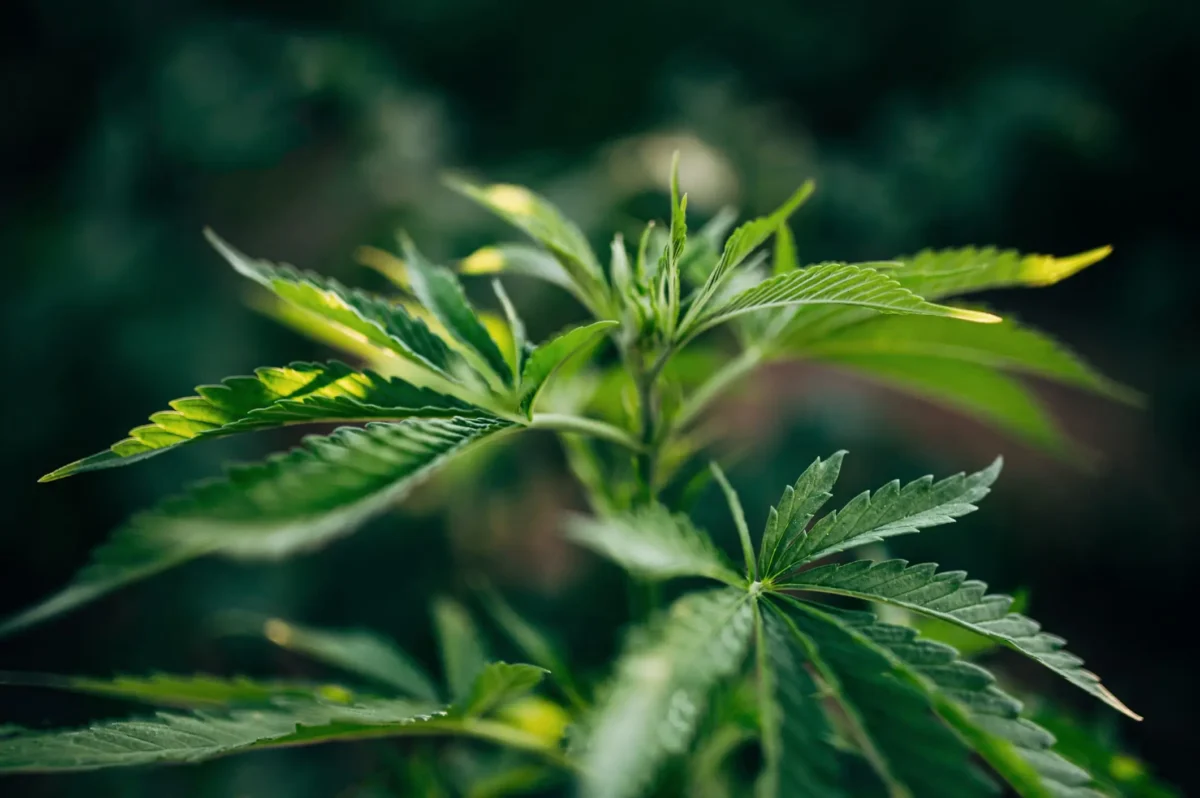What Are Terpenes?
What are terpenes?
Do you find yourself wondering… “What are terpenes and what do they have to do with cannabis?”…
Terpenes (pronounced tur-peens) are fragrant essential oils found in all plants that are responsible for different tastes and scents. The cannabis plant consists of a wide variety of chemicals and compounds. About 140 of these aromatic organic hydrocarbons are terpenes. Terpenes bind to receptors in the brain and give rise to various effects. Terpenes may also modulate the effects of cannabinoids such as THC and CBD concentrations.
We have researched the potential benefits of terpenes found in the oils of non-cannabis plants and have included links to the research articles in the terpene descriptions below. The studies are animal studies, with no human studies available to date. As terpene research advances, we will update our information.
Primary Terpenes
 Caryophyllene is a spicy, peppery terpene found in many different edible plants. Spices like black pepper, cloves, basil, rosemary, eucalyptus, as well as cannabis are known to exhibit high concentrations of caryophyllene. This zesty terpene is known for having anti-anxiety, anti-inflammatory, anti-fungal, analgesic, anti-oxidant and antibiotic effects.
Caryophyllene is a spicy, peppery terpene found in many different edible plants. Spices like black pepper, cloves, basil, rosemary, eucalyptus, as well as cannabis are known to exhibit high concentrations of caryophyllene. This zesty terpene is known for having anti-anxiety, anti-inflammatory, anti-fungal, analgesic, anti-oxidant and antibiotic effects.
 Geraniol is a sweet aromatic terpene present in geraniums. Geraniol is commonly used in the fragrance industry with its rose and floral notes. This monoterpenoid exhibits analgesic, anti-depressant and anti-inflammatory properties.
Geraniol is a sweet aromatic terpene present in geraniums. Geraniol is commonly used in the fragrance industry with its rose and floral notes. This monoterpenoid exhibits analgesic, anti-depressant and anti-inflammatory properties.
 Humulene is a terpene naturally occurring in clove, basil, hops, and cannabis sativa. It carries a subtle earthy, woody aroma with spicy herbal notes you might recognize in some of your favourite strains. Humulene is analgesic, anti-inflammatory and anti-bacterial relieving.
Humulene is a terpene naturally occurring in clove, basil, hops, and cannabis sativa. It carries a subtle earthy, woody aroma with spicy herbal notes you might recognize in some of your favourite strains. Humulene is analgesic, anti-inflammatory and anti-bacterial relieving.
 Limonene is an aromatic dominant terpene in strains with a pronounced Sativa effect. It has a fresh citrus odour commonly found in lemons, juniper, rosemary, peppermint, and fruit peels. It also aids in absorbing other terpenes through the skin and mucous membranes. Limonene is best known for its anti-fungal treatment. The terpene is also an anti-anxiety and anti-depressant along with anti-inflammatory, anti-oxidant, anti-spasmodic, anti-bacterial and antibiotic.
Limonene is an aromatic dominant terpene in strains with a pronounced Sativa effect. It has a fresh citrus odour commonly found in lemons, juniper, rosemary, peppermint, and fruit peels. It also aids in absorbing other terpenes through the skin and mucous membranes. Limonene is best known for its anti-fungal treatment. The terpene is also an anti-anxiety and anti-depressant along with anti-inflammatory, anti-oxidant, anti-spasmodic, anti-bacterial and antibiotic.
Study: Neuroprotective Potential of Limonene and Limonene Containing Natural Products
 Linalool is a naturally occurring terpene in many flowers and spices, including lavender, coriander, mint, and birch trees. It gives off a complex yet delicate floral aroma, and while its effects are myriad, it is, in particular, one of the substances used most widely as a sedative. Linalool is also used in the treatment of anxiety, depression and epilepsy. As well as analgesic, anti-inflammatory, anti-oxidant and anti-fungal.
Linalool is a naturally occurring terpene in many flowers and spices, including lavender, coriander, mint, and birch trees. It gives off a complex yet delicate floral aroma, and while its effects are myriad, it is, in particular, one of the substances used most widely as a sedative. Linalool is also used in the treatment of anxiety, depression and epilepsy. As well as analgesic, anti-inflammatory, anti-oxidant and anti-fungal.
 Myrcene is a terpene with a tropical, musky aroma that often occurs in highly fragrant plants and herbs such as mangoes, hops, bay trees, thyme, lemongrass, and basil. Numerous cannabis strains produce Myrcene, and some have suggested that it lends sedative, Indica-like effects to strains containing more than 0.5% of this terpene. This monoterpene is also analgesic, anti-bacterial, anti-inflammatory, antipeptic and antispasmodic.
Myrcene is a terpene with a tropical, musky aroma that often occurs in highly fragrant plants and herbs such as mangoes, hops, bay trees, thyme, lemongrass, and basil. Numerous cannabis strains produce Myrcene, and some have suggested that it lends sedative, Indica-like effects to strains containing more than 0.5% of this terpene. This monoterpene is also analgesic, anti-bacterial, anti-inflammatory, antipeptic and antispasmodic.
 Pinene is an aromatic compound commonly found in pine needles, rosemary, basil, parsley, and dill. Terpenes such as pinene are fragrant oils secreted in marijuana trichomes. While they originally were developed as adaptive protection against predators, these compounds offer us humans a variety of benefits. This includes analgesic, anti-depressant, anti-anxiety, antioxidant and antibiotic. It also acts as an anti-inflammatory and anti-fungal.
Pinene is an aromatic compound commonly found in pine needles, rosemary, basil, parsley, and dill. Terpenes such as pinene are fragrant oils secreted in marijuana trichomes. While they originally were developed as adaptive protection against predators, these compounds offer us humans a variety of benefits. This includes analgesic, anti-depressant, anti-anxiety, antioxidant and antibiotic. It also acts as an anti-inflammatory and anti-fungal.
 Terpineol is frequently used to create pleasant aromatic profiles in products like soap, lotion, and perfume. In addition to cannabis, it occurs naturally in lilacs, pine trees, lime blossoms, and eucalyptus sap. It is characterized by its ability to relax the consumer. Terpineol holds several therapeutic benefits, including analgesic, anti-bacterial, anti-inflammatory and anti-seizure.
Terpineol is frequently used to create pleasant aromatic profiles in products like soap, lotion, and perfume. In addition to cannabis, it occurs naturally in lilacs, pine trees, lime blossoms, and eucalyptus sap. It is characterized by its ability to relax the consumer. Terpineol holds several therapeutic benefits, including analgesic, anti-bacterial, anti-inflammatory and anti-seizure.
 Terpinolene is an isomeric hydrocarbon with a fresh, floral, herbal, and occasionally citrusy aroma and flavour. It is found in various plants, including nutmeg, tea tree, conifers, apples, cumin, and lilacs, and is sometimes used in soaps, perfumes, and lotions. Terpinolene has sedative-like effects. it’s also anti-inflammatory, anti-oxidant, anti-fungal and anti-bacterial.
Terpinolene is an isomeric hydrocarbon with a fresh, floral, herbal, and occasionally citrusy aroma and flavour. It is found in various plants, including nutmeg, tea tree, conifers, apples, cumin, and lilacs, and is sometimes used in soaps, perfumes, and lotions. Terpinolene has sedative-like effects. it’s also anti-inflammatory, anti-oxidant, anti-fungal and anti-bacterial.
Secondary Terpenes
 Nerolidol is a secondary terpene in many strong aromatics like jasmine, tea tree, and lemongrass. As such, it delivers a subdued floral aroma with notes of fruity citrus, apples, and rose. This terpene is believed to produce sedating effects. It also exhibits analgesic, anti-fungal, anti-inflammatory, antioxidant, antibiotic and anti-bacterial properties.
Nerolidol is a secondary terpene in many strong aromatics like jasmine, tea tree, and lemongrass. As such, it delivers a subdued floral aroma with notes of fruity citrus, apples, and rose. This terpene is believed to produce sedating effects. It also exhibits analgesic, anti-fungal, anti-inflammatory, antioxidant, antibiotic and anti-bacterial properties.
 Bisabolol is a sweet and floral terpene with hints of citrus and spice. Commonly found in German chamomile, bisabolol is widely used in cosmetics, fragrances, and skincare products. Bisabolol has been proven to work as an antibiotic, anti-oxidant, anti-inflammatory, anti-anxiety and anti-bacterial, along with antipeptic, antispasmodic, anti-fungal and analgesic characteristics.
Bisabolol is a sweet and floral terpene with hints of citrus and spice. Commonly found in German chamomile, bisabolol is widely used in cosmetics, fragrances, and skincare products. Bisabolol has been proven to work as an antibiotic, anti-oxidant, anti-inflammatory, anti-anxiety and anti-bacterial, along with antipeptic, antispasmodic, anti-fungal and analgesic characteristics.
Become A Medical Cannabis Patient
If you’ve been wondering whether medical cannabis could be the missing piece in your treatment plan, now is the time to explore it — safely, professionally, and with the right support.
Thousands of patients have already taken this step — and found real relief. You deserve that too.
Share our referral form with your doctor today or apply now to become a patient!



